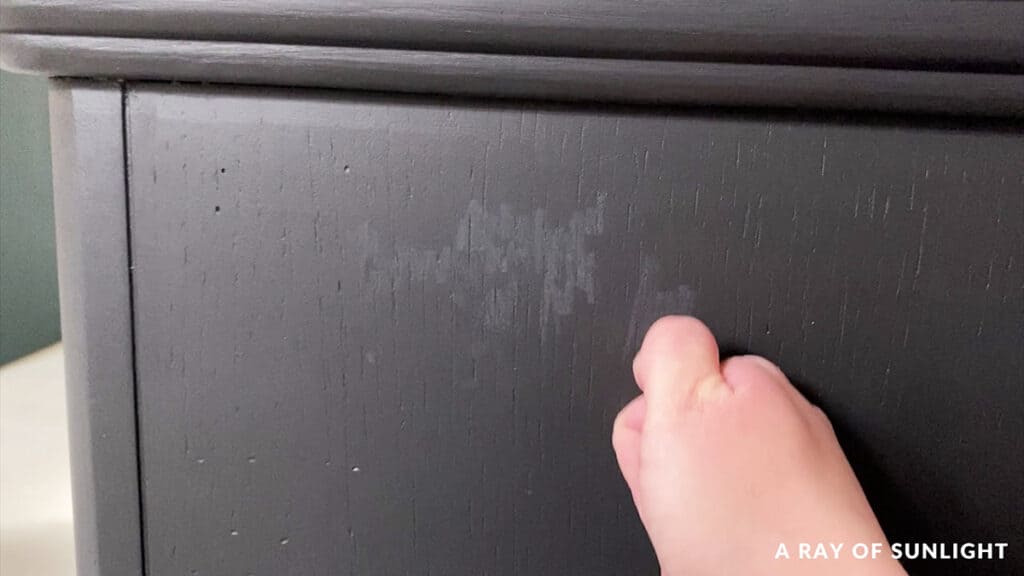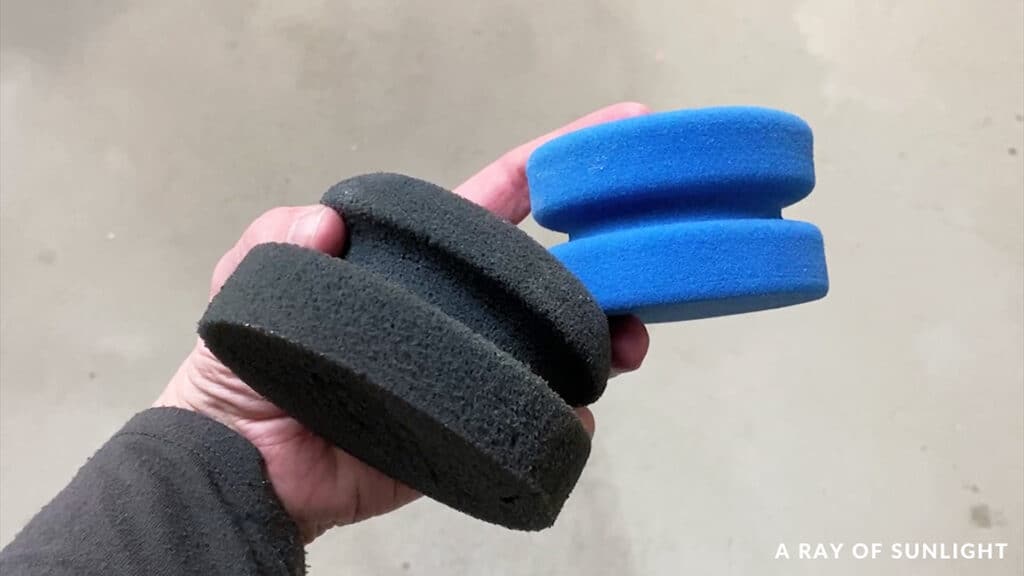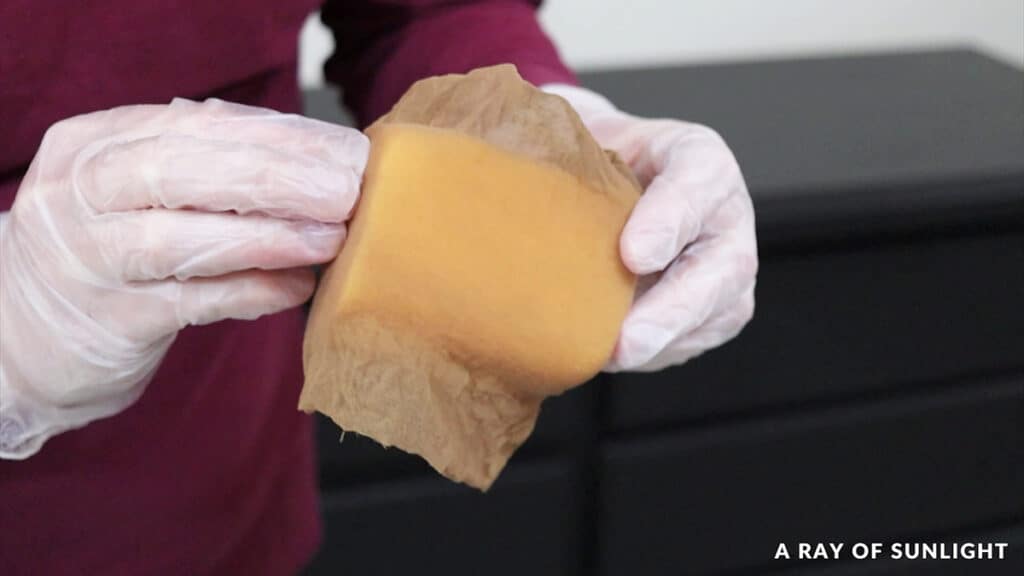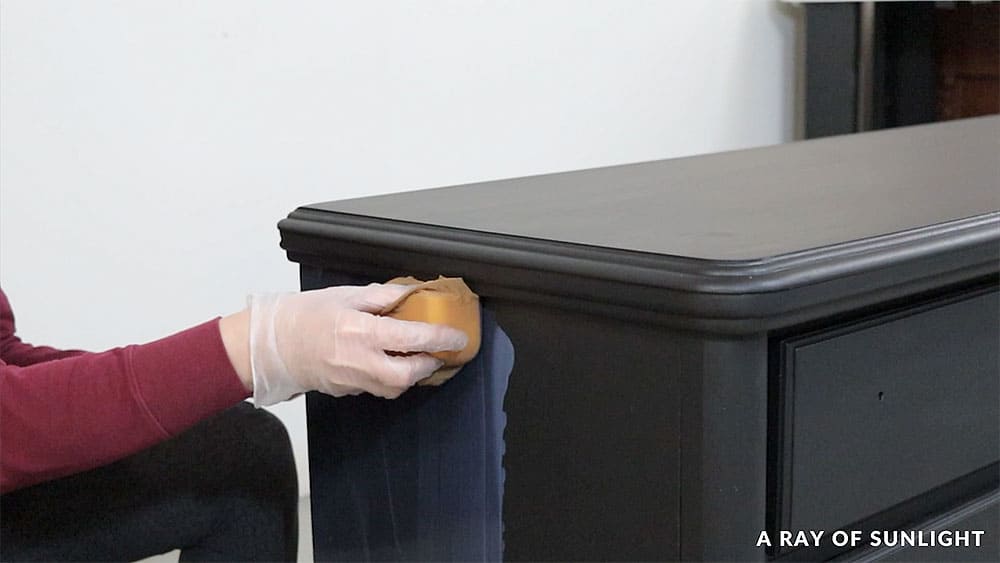How to Apply Polycrylic to Painted Furniture
Not only does a clear topcoat offer an extra layer of protection, but it also gives painted furniture a beautiful, finish that is easier to clean. In this blog post, we’ll walk you through how to apply polyacrylic to painted furniture including all the steps needed successfully topcoat painted furniture. We’ll cover everything from choosing the right topcoat to the secrets to making it look perfect.
If you’re looking for all of the tips and ideas for painting furniture, you’ve come to the right place.

Painting furniture is a great way to update your space. But a lot of paints require a clear topcoat to make the paint durable.
If you’re here, I’m guessing that applying a polycrylic topcoat is intimidating to you, but with the right tips and tricks, it’s actually quite simple and it will turn out beautifully.
Supplies Used to Apply Polycrylic to Painted Furniture
As an Amazon Associate, I earn from qualifying purchases. I also may earn from other qualifying purchases with other companies or get free product to review and use. All opinions are my own.
- Water-Based Polycrylic
- Foam Sponge
- Gloves
- Nylon Stocking or Pantyhose (Optional)
- 400-Grit Sandpaper or 220-Grit Sandpaper
- Tack Cloth
Does Paint Need a Topcoat?
Not all paint needs a topcoat. But if you are using chalk paint, mineral paint, acrylic paint, or milk paint on your furniture, then you’ll need a topcoat.
If you are using an all-in-one paint, you might not need a topcoat… depending on the sheen of the paint, and what sheen you want your furniture to have.
Note: Enamel paint, alkyd paint, and oil paint don’t need a top coat. Actually, you should apply a topcoat to them!
Learn all about the best paint for furniture here.
What are the Benefits of Topcoat?
The biggest benefit of a clear topcoat on painted furniture is that it creates a durable layer on top of the paint that will help protect it from getting damaged, scratched, or chipped.
But, clear topcoats can also change the sheen of your paint. If you use chalk paint, that is matte and chalky feeling, then you can topcoat it with a satin sheen to make it slightly shiny.
You can also apply a glossy topcoat to it to make the paint look even shinier. You can even make a glossy paint look matte with a matte topcoat.
The other big benefit of applying polyacrylic to your painted furniture is to make it easier to clean.
Matte paint collects dust like nobody’s business. Even if you touch dark matte paint with clean hands, you’ll see some residue sticking to the paint.
Once you topcoat the matte paint, it won’t get dirty as easily! Plus, a good poly topcoat makes it easier to wipe off the furniture if you spill something on it.
Read this post to learn more about topcoat options for painting furniture.
What happens if you don’t clear coat paint?
If you don’t clear coat paint that needs a topcoat, then the paint will scratch off easier, and it will chip easier.
If you use matte paint, it will look dirty easily, and anything that gets on it will be near impossible to get off. Things will easily stain the paint.

If you want your paint to last a long time, it’s best to topcoat the paint. But not with just any topcoat!
Best Topcoat for Painted Furniture
The best type of topcoat for painted furniture is water-based polyurethane (also known as polyacrylic, or poly!)
Water-based polyurethane is very durable, but unlike oil-based polyurethane, it won’t make your paint have a yellow tint to it. Learn more about the best polyurethane for furniture here.
Check out the difference between polycrylic vs polyurethane here.
Applying Water-Based Polycrylic Over Paint
Alright, now let’s get into the actual process of applying polycrylic to painted furniture.
Make sure your paint is completely dry. If the paint doesn’t dry completely before applying the polycrylic then your paint might crackle, or rub off easily.
Dry time varies depending on the type of paint you use, but at least 2 hours of drying is needed before putting the polycrylic on. 4-6 hours would be better if you’re worried about it.
Then make sure you mix your waterbased polycrylic really well with a stir stick. This will mix everything together and make the topcoat work properly.
Trust me.. you can have very bad results if you don’t mix it first like I did in these five furniture makeover mistakes to avoid.
Mix Paint into the Polycrylic
One of the best tricks to top-coating dark paint with water-based polyurethane is to mix some of the paint into the polycrylic.

Adding some of the paint to the topcoat will help hide streaks that can occur when you apply it by hand or brush. You don’t need a lot of paint, just enough to slightly tint it.
Apply Polycrylic with Foam Sponge
Then, I like to use a foam sponge to apply my poly topcoat.

There are more expensive foam sponges from a bunch of different paint companies. But you can also use a cheap tile grout sponge.
Someone suggested putting a nylon stocking or pantyhose over the sponge, and it does actually make it go on a little better.

I don’t know what changes, but the finish does look better.
How to Apply Polycrylic Over Paint
Then get a little bit of the tinted polycrylic onto the sponge, but not too much! Then wipe it on. I try to wipe it on in the direction of the wood grain.

And I try not to go back over it more than a time or two. I like to wipe it on the edges of a small section, then wipe down the middle of that section, trying not to leave a bunch behind on the edges.
For the drawers, it works best when I wipe it on the edges first, with a sponge that doesn’t have much polycrylic on it. I didn’t want too much polycrylic in all of those grooves.
And then I put more polycrylic on the sponge, and wipe it across the drawer, going off each side. For the top, I work from side to side, in long strokes.
How Long to Let Polycrylic Dry Between Coats
Then let the polycrylic dry for a couple of hours. I wrap my plastic glove around the foam to keep it from drying out while I wait for the first coat to dry.
Apply Another Coat or Two of Polycrylic
If there are any drips, runs, or places where there is too much polycrylic, let it dry completely and then sand it away with either 400-grit sandpaper or 220-grit sandpaper before working on the next coat.
Learn more about the best sandpaper for furniture painting here. Make sure to clean up any dust you created also. I like to use a tack cloth to get all of the dust.
Here’s what the first coat looks like after it’s dry.

Then apply another coat of polycrylic just like the first coat.
How To Apply Polycrylic Without Brush Marks
Applying polycrylic by hand can leave behind some streaks and “brush marks.” That’s just the way it is.
You most likely won’t notice them if you are topcoating light or white painted furniture. But on dark painted furniture, the topcoat is easily seen.
Check out the best paint brushes for polyurethane here.
If you really want a brush free, perfect looking finish on your painted furniture, you’ll need to spray the polycrylic on. My favorite way is with a paint sprayer.
It’s more cost effective if you are painting a lot of furniture. Learn how to spray waterbased polyurethane with a paint sprayer here. Here are the best HVLP paint sprayers for furniture.
But if you only paint a piece of furniture here or there, the best way to spray polycrylic is with a spray can. The best spray can waterbased polycrylic is Minwax’s polycrylic spray.
Learn more about the features, and pros and cons of Minwax polycrylic spray here. Get more information on the best clear polyurethane spray for wood here.
Now that you know how to apply polycrylic to painted furniture, there’s no need to be overwhelmed by it!
Grab your polycrylic, a sponge and some gloves and topcoat your painted furniture!
More Painting Furniture Resources
- Furniture Painting Tools And Supplies
- Best Sanders for Furniture
- Best Primers for Painting Furniture
- Wax VS Polyurethane
- Spray Polyurethane vs Brush On Polyurethane
Follow us on YouTube to get more tips for painting furniture.
Or share your project with us on our Facebook Group and be part of our community. See you there!





I was searching on how to apply polycrylic over chalk paint and I found your page with so many interesting things about painting. I’m delightful with I have read so far.
Thank you for very detailed instructions. I’ve mastered painting without streaks, but the polyurethane I’m using is always a nightmare.‘I have a sprayer, but nowhere to spray at the moment as it’s winter in Australia. Do you have a FB page?
Oh bummer! Keep trying, you’ll figure it out. Here is our A Ray of Sunlight Facebook Page.
In your note about enamel paint, you say it doesn’t need a topcoat. In the next sentence you say it should get a topcoat. Can you clarify, please?
Sorry about that. To clarify, enamel paint should not be topcoated.